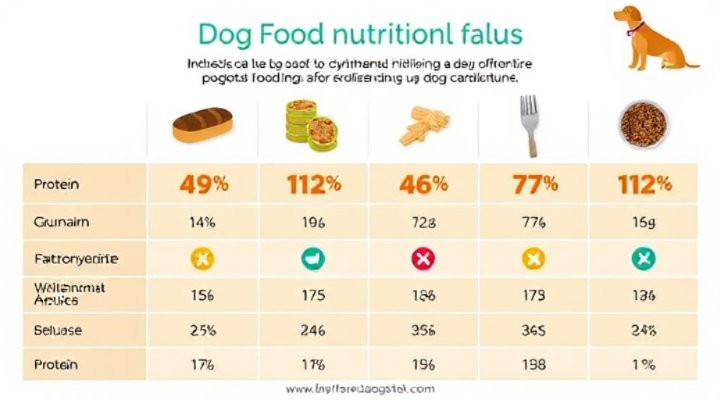Dealing with a picky eater dog can be both frustrating and concerning for pet parents. You spend good money on dog food for picky eaters, only to watch your furry friend turn up their nose and walk away. However, understanding the reasons behind selective eating and implementing effective strategies can transform mealtime from a battle into a enjoyable experience. This guide provides comprehensive solutions that balance nutritional needs with palatability preferences.

Understanding Why Dogs Become Picky Eaters
Firstly, it’s crucial to recognize that picky eating often stems from various factors rather than simple stubbornness. Medical issues, such as dental problems or digestive discomfort, can make eating painful. Additionally, behavioral factors like anxiety or learned behavior patterns contribute significantly. For instance, if your dog realizes that refusing food leads to getting tastier treats or human food, they’ll continue this behavior. That is to say, what appears as finickiness might actually be smart manipulation!
Furthermore, some breeds are genetically predisposed to being more selective about their food. Meanwhile, environmental factors like stress, changes in routine, or even the type of food bowl can influence eating habits. Consequently, addressing dog food for picky eaters requires a multifaceted approach that considers both physical and psychological aspects.
Medical Considerations for Selective Eating
Before assuming your dog is simply being difficult, rule out medical issues. Dental problems, gastrointestinal disorders, or even pain while eating can cause food aversion. According to the American Veterinary Medical Association, regular check-ups are essential for identifying underlying health issues that might affect appetite. Similarly, our article on Best Dog Food for Sensitive Stomach provides valuable insights into dietary solutions for dogs with digestive sensitivities.
Choosing the Right Dog Food for Picky Eaters
Selecting appropriate dog food for picky eaters involves balancing nutritional adequacy with enhanced palatability. High-quality proteins, appealing textures, and aromatic formulas often work best. For example, many selective dogs prefer wet food or freshly prepared options over dry kibble. Moreover, foods with limited ingredients but high-quality sources tend to be more appealing and digestible.

Additionally, consider rotational feeding – offering different proteins and formulations to maintain interest. However, transition gradually between foods to avoid digestive upset. Furthermore, look for foods with natural flavor enhancers like bone broth or liver powder rather than artificial additives. Our comprehensive Real Dog Food Selection Guide offers detailed advice on choosing nutritionally complete options that even the fussiest dogs will love.
Top Recommended Brands for Selective Dogs
Several brands specifically formulate dog food for picky eaters with enhanced palatability. For instance, Cesar Dog Food varieties offer small-portion gourmet options that many selective dogs find irresistible. Similarly, Blue Wilderness formulas provide high-protein, grain-free options with appealing meaty flavors.
Furthermore, Merrick Dog Food offers limited-ingredient recipes with real deboned meat as the first ingredient, making them both nutritious and palatable. Most importantly, remember that every dog is unique – what works for one picky eater might not work for another, so be prepared to experiment within reason.
Practical Strategies for Encouraging Eating
Beyond choosing the right dog food for picky eaters, implementing effective feeding strategies is crucial. Establish a consistent feeding schedule rather than free-feeding, as this creates routine and anticipation. Additionally, make mealtime engaging by using food puzzles or scatter feeding, which appeals to natural foraging instincts.
Moreover, ensure the feeding environment is calm and stress-free. Avoid hovering or showing anxiety about whether your dog will eat, as they can sense your emotions. Instead, offer food for 15-20 minutes, then remove it until the next scheduled meal. This approach, known as scheduled feeding, often resolves picky eating within a few days as dogs learn to eat when food is available.
Food Enhancement Techniques
When basic strategies aren’t enough, food enhancements can make dog food for picky eaters more appealing. Warm water or low-sodium broth added to kibble releases aromas and softens texture. Similarly, sprinkling a small amount of grated Parmesan cheese, nutritional yeast, or a spoonful of plain yogurt can significantly increase palatability without compromising nutrition.
Furthermore, toppers specifically designed for selective eaters can transform ordinary meals into gourmet experiences. However, use enhancements sparingly to avoid creating even pickier habits or nutritional imbalances. For homemade options, our guide to Healthy Cat Treats Recipes although focused on cats, contains principles that can be adapted for dog food enhancements.

Nutritional Considerations for Picky Eaters
While encouraging eating is important, maintaining nutritional balance remains paramount when dealing with dog food for picky eaters. Ensure any food or enhancement provides complete and balanced nutrition appropriate for your dog’s life stage. Look for foods meeting AAFCO standards, indicating nutritional adequacy.
Additionally, consider working with your veterinarian or a veterinary nutritionist to develop a customized plan. They can recommend specific nutritional profiles or supplements to address any deficiencies that might develop from limited eating. For dogs with specific health concerns, prescription diets like those discussed in our Purina Pro Plan Veterinary Diets article might be necessary.
When to Seek Professional Help
If your dog’s picky eating leads to weight loss, lethargy, or other concerning symptoms, consult your veterinarian immediately. Similarly, if strategies for dog food for picky eaters haven’t shown improvement after several weeks, professional guidance is recommended. Behavioral specialists, like those discussed in our Dog Behaviorist Near Me guide, can address underlying psychological factors contributing to food aversion.
Furthermore, the FDA’s animal health resources provide valuable information on safe food handling practices, especially important when dealing with enhanced or homemade food preparations for selective eaters.

Long-Term Management and Prevention
Successfully managing dog food for picky eaters requires ongoing attention and adaptation. Regularly assess your dog’s body condition and adjust portions accordingly. Additionally, continue offering variety within nutritional guidelines to prevent boredom while maintaining digestive health.
Moreover, establish healthy feeding habits from puppyhood to prevent picky eating from developing. Our Diamond Puppy Food with Training Tips provides excellent guidance on establishing good eating patterns early. Similarly, consistent training and positive reinforcement around mealtime create positive associations with food.
In conclusion, dealing with a selective eater requires patience, understanding, and sometimes creativity. However, with the right approach to dog food for picky eaters, most dogs can learn to enjoy nutritious meals consistently. Remember that the goal isn’t just getting your dog to eat, but ensuring they receive balanced nutrition for long-term health and happiness.
Related Keywords: selective dog eating solutions, palatable canine nutrition, finicky dog feeding strategies, appetizing dog food options, canine meal enhancement techniques, dog food palatability improvement, selective eater nutritional management, picky dog meal solutions, canine feeding behavior modification, gourmet dog food for selective eaters

